The Northern Inuit Dog has recently enjoyed a spike in popularity due to its appearance as Dire Wolves in the hugely popular HBO series Game of Thrones.
Although these dogs look similar to wolves, there is actually no wolf DNA in them. Their looks draw you in first, but you will stay for their endearing character
This breed is loved for being even-tempered, intelligent, and loyal. They may not, however, be perfect for first-time dog owners (more on this later).
They can be fairly strong-willed, so having experience with other dogs will be beneficial.
TABLE OF CONTENTS
What is a Northern Inuit Dog?
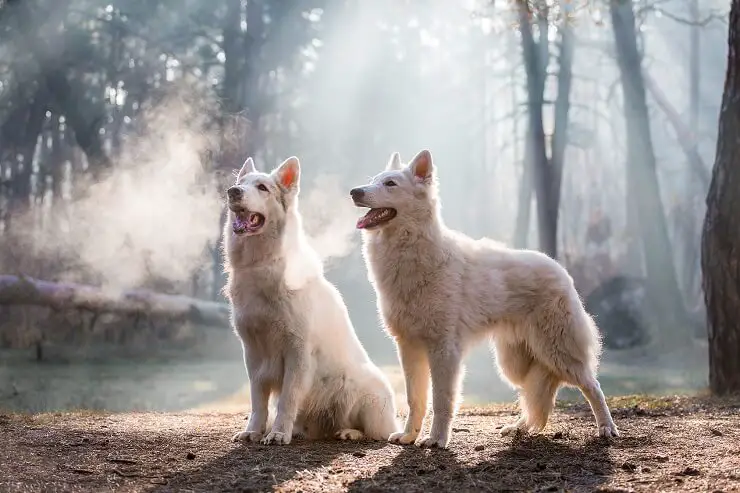
From Adobe Stock
The Northern Inuit Dog is technically considered a crossbreed and therefore is not registered with the American Kennel Club (AKC).
There are two popular stories about how these dogs were bred.
Firstly, its thought that they were purposely bred by a man named Eddie Harrison. They crossbred Siberian huskies, Alaskan Malamutes and German Shepherds in the 1980s to create the Northern Inuit breed.
The other story says that the breed was created earlier, in the 1970s. Canadian Eskimo Dogs crossed with Labrador Huskies were brought over to the UK and bred with Alaskan Malamutes and German Shepherds. It is still not known which of these stories is true.
In America, the breed is now maintained by the Northern Inuit Society.
They make sure that a certain standard of breeding is upheld and they are working towards the AKC certification of the breed.
Northern Inuit Dog Appearance
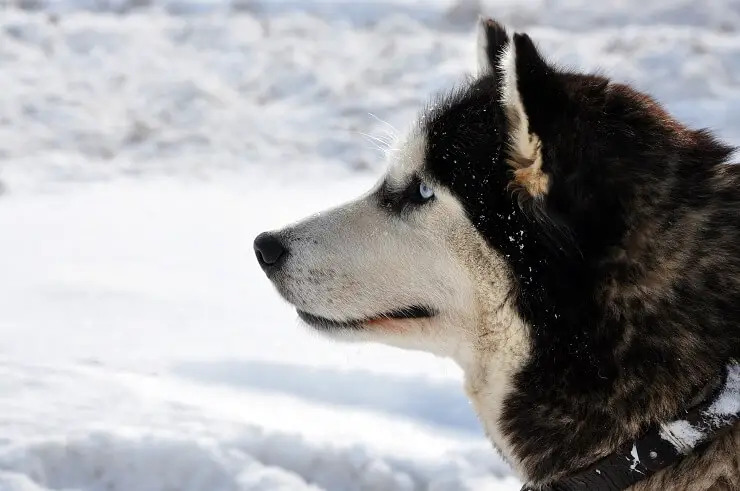
From Adobe Stock
They have an eye catching wolf-like appearance with an athletic build and a strong chest and legs. They have a long muzzle and ears that stand erect on top of the head. Their tail should be straight. A true Northern Inuit Dog will never have a curled tail.
Their double coat is thick and coarse, and comes in a variety of colors including: black, white, grey, apricot and sable. Any mix of these colors is acceptable for the breed. This is also true of most facial markings.
These dogs are big time shedders. They will shed all through the year and big blowouts in spring and fall.
Although these dogs portray the Dire Wolves in Game of Thrones, the breed was not bred to resemble the Dire Wolf (a species that is now extinct). If you are looking for a closer match, you should look at the American Alsatian.
Height and Weight
The Northern Inuit Dog will reach between 23-32 inches at the withers when fully grown. They should weigh between 55 to 110lb.
This is a pretty big range due to the fact that they are cross breeds. You will find that males are noticeably larger than females.
Color Variations
The classic color for the Northern Inuit Dog is the grey and white mix that you would associate with a wolf. They have other coat colors that are just as striking though including: white, grey, apricot, black, sable and any mix of those colors.
Facial markings are common and permitted in the breed standard unless the dog is completely white.
Coat
Their coat is incredibly dense. They have a double coat that, along with the thickness, makes the coat waterproof. The coat is coarse and should be around 2 inches in length. These dogs shed so the coat can become thicker in winter, losing it again in spring.
Northern Inuit Dog Temperament
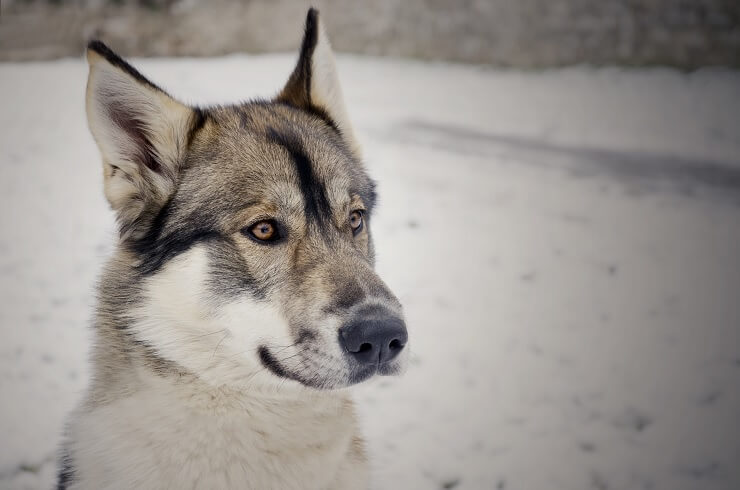
From Adobe Stock
The Northern Inuit Dog has been bred with a focus on maintaining a friendly, calm and confident character. Even though these dogs have an uncanny resemblance to wolves, there is no wolf DNA in them.
They are extremely unlikely to show any signs of aggression and are generally considered to be a placid breed. They have a natural confidence and seem comfortable in all environments.
This is a highly intelligent and trainable dog, but they do have a slight stubborn streak that makes them act out on occasion. It takes a strong, patient hand to keep them in check, which is why we recommend having some previous experience with dogs before taking this breed on.
They form strong bonds with their main human. This is the person who does the majority of the feeding, walking and training. They still love the other members of their family and are incredibly loyal. This dog adores being around people and is well suited to family life where there is plenty of people around.
Unfortunately, this strong bond can translate into separation anxiety. They do not enjoy being left alone and can become loud and destructive. One way to reduce this anxiety is having another dog in the household. This is not realistic for everyone, but it’s an option definitely worth considering.
One of their most disruptive behaviors is howling. These dogs love to howl and there is not much that can stop them. This is one of the reasons they are best suited to living in a spacious area. If you have close neighbors, you may become unpopular. They also really benefit from a large house and a fenced in yard.
Their confidence means they are very trusting of new people. They will happily greet strangers on walks or in your home. For the same reason, they are not particularly good guard dogs. On the other hand, they have been used successfully as therapy dogs. Their intelligence and friendly, placid temperament makes them a great choice for this kind of job.
Is a Northern Inuit Dog a Good Family Dog?
They are dog that has been bred with a lovely temperament and they usually behave well around children. You should always supervise any dog around young children, especially a bigger dog as they can easily knock children over by accident.
How to Train a Northern Inuit Dog
Northern Inuit Dogs are extremely intelligent but have a tendency to become bored easily. This makes them impatient during repetitive dog training exercises and may cause them to act out.
The best way to keep this breed’s attention is through positive reinforcement methods – give them plenty of treats and praise. You should also keep training sessions short and add in fun activities to keep them on task.
Training these dogs is slightly harder than your average dog.
You should be patient and never punish them. These are sensitive dogs and a harsh word could set them back. If you feel apprehensive about the training of these dogs, hiring a professional trainer or going to classes should help you build your confidence.
These dogs naturally love people and are good with dogs but socialization from a young age is still important. This socialization will allow them to learn how to behave correctly around new people and canines.
Thanks to their calm nature and intelligence, these dogs make great therapy dogs. If you want to train them to be a therapy dog, the help of a professional is recommended. There are quite strict rules that they need to comply with.
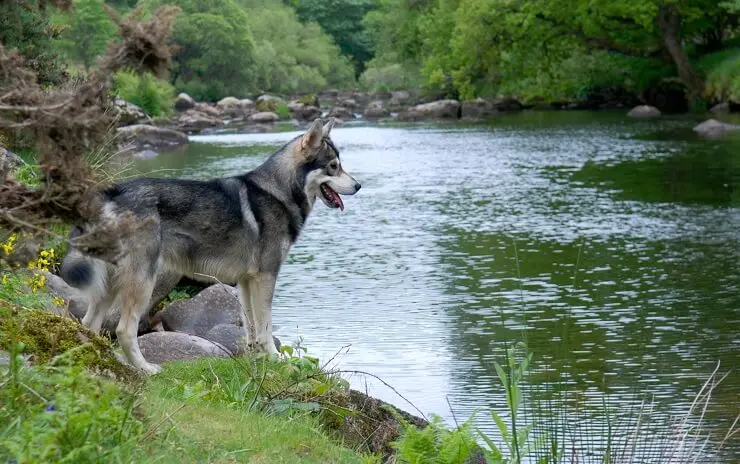
From Adobe Stock
Caring For a Northern Inuit Dog
The Northern Inuit Dog needs a home with experienced dog owners who understand behavior and training methods. They need plenty of space to play and run around in.
Some company is also greatly appreciated, human or canine. They really don’t need a huge amount of exercise but being in a fairly active household is recommended.
If you care about hair on your furniture, this dog is probably not for you. They shed a lot and love to be close to you. Being covered in dog hair is going to become normal for you.
This is a healthy breed for the most part, but they do have some health concerns that should be considered before you take on one of these dogs.
Exercise Requirements
The Northern Inuit Dog does not need as much exercise as you are probably thinking – they really only need two walks a day. Their daily activity should be around an hour to an hour and a half.
They are able to handle more though and enjoy hiking and running too.
Remember the Northern Inuit Dog has a high prey drive and enjoys chasing things. For this reason, before taking them off the leash, you need to master recall. Once you are confident in their recall abilities, they should be able to walk off leash with no issues.
Due to their naturally inquisitive nature, these dogs enjoy learning new activities. Introducing them to obedience training, agility and other events will run their energy levels down and keep their mind active.
Grooming and Shedding
Their double coat does need some looking after. Brushing them a few times a week will help shed fur – also make sure to clear dirt and debris out of their coat too.
During shedding seasons (spring and fall) you will want to increase the regularity of brushing. They will shed an incredible amount of fur and brushing every day will help to reduce the amount of fur in your home.
These dogs do not need regular bathing as their coats repel dirt. They will need their nails clipped bimonthly and their teeth cleaned daily.
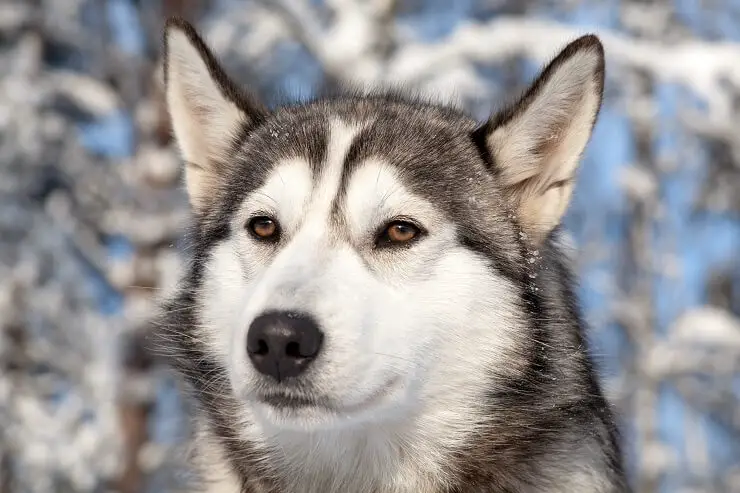
From Adobe Stock
Feeding and Diet
This breed is known to have a sensitive stomach. Most owners find that their dog does best on either a high-quality kibble or a raw diet. If you are going to use kibble, make sure that you look for one that is high in proteins and fats.
Sugar is extremely bad for their health and you should avoid high sugar treats or foods.
When they are young, you should feed your pup 3 to 4 meals a day.
Once they reach 6 months to a year they should be moved to two meals a day. Be sure to include treats when working out their daily intake.
Known Health Problems
In general, they are a fairly healthy breed. But, if you’re like most dog parents (or parents-to-be), you care for your pet immensely. Having pet insurance could save you from the headache of going to the vets with reimbursement for every vet bill from now on!
The Northern Inuit Society ensures that all breeding dogs have regular eye checks and hip and elbow scoring. Even so, issues with hip and elbow dysplasia do occur in this breed, as do issues with eyes, such as glaucoma.
Other conditions that are not as common but have been seen are dwarfism, cryptorchidism, degenerative myelopathy and epilepsy. Fortunately most of these conditions are rare. Your breeder should be able to provide you with a full list of any health concerns that affect the dog’s line.
How Long Does a Northern Inuit Dog Live?
The life expectancy of a healthy Northern Inuit Dog is between 12 and 14 years. This is quite a long life for a dog their size.
Buyer’s Guide
According to the Northern Inuit Society, there are currently four official Northern Inuit Dog breeders in America. These breeders all have long waiting lists for their puppies. If you are committed to buying one of these dogs, it will be quite a long process.
Chances are you will have to drive or fly a long distance to your breeder once the puppies are born. Bringing your pup back will also be quite the journey if you don’t live close. It may be quite expensive too. These are all things to consider when you are thinking about buying one of these dogs.
If you find Northern Inuit Dogs being bred outside of one of these breeders, you should be careful. Due to their spike in popularity, the breed has found their way into puppy mills. These places do not take the same care as registered breeders when it comes to health checks, temperament and the welfare of their dogs.
Warning signs of a bad breeder are that you can’t meet the parent dogs, that the breeder is trying to sell puppies under 8 weeks old or if the breeder is trying too hard to sell them. Reputable breeders love every one of their dogs and want to ensure they go to great homes.
How Much Does a Northern Inuit Puppy Cost?
A Northern Inuit Dog from a reputable breeder will cost between $800 to $1,000.
This price may increase depending on the availabilities of puppies.
Quick Breed Summary Table
| Breed Characteristics | |
| Size: | 23-32 inches |
| Weight: | 55-110lb |
| Lifespan: | 12-14 years |
| Coat: | Double coat, thick, coarse and waterproof |
| Color: | Black, white, grey, apricot and sable |
| Do They Shed: | Yes |
| Temperament: | Friendly, confident, loyal and placid |
| Intelligence: | Highly intelligent but becomes bored easily |
| Socialization: | Great with other dogs |
| Destructive Behavior: | Likes to howl |
| People Skills: | Extremely trusting of new people |
| Good with Children: | Good with children but should always be supervised |
| Activity Levels: | Moderate to high activity levels |
Summary
The Northern Inuit Dog is an incredible breed that is sure to turn heads.
Their friendly nature and level temperament makes them a wonderful dog for family environments. They are great with kids but should not be left unattended with them.
We would recommend that you have some previous dog experience before owning this breed.
They are a little harder to train than your average pup. These dogs are well worth the effort though; they are loyal and loving and will make you smile every day.

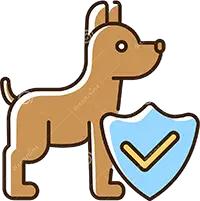
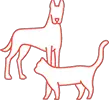
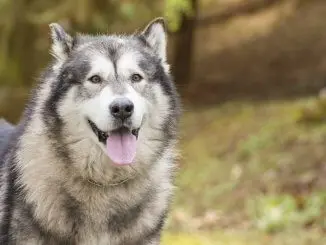
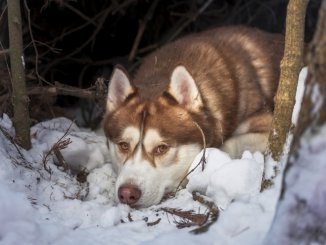
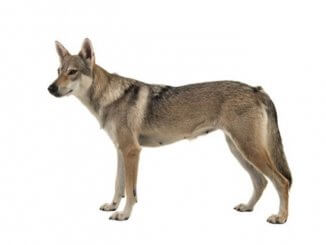
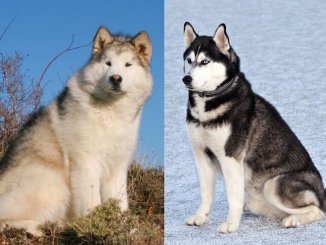
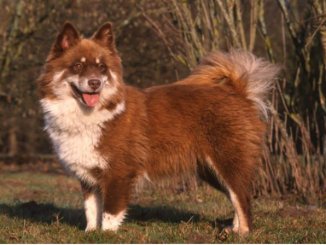
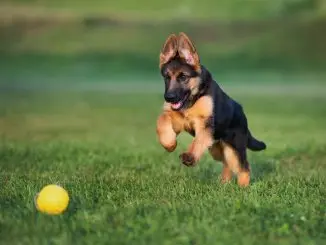
Thanks for all of this knowledge. Please I want to know if they can survive in Africa.
That whole post is spot on I love my boy very much he’s literally treated as a human in my house if you get to know your northern Inuit they will conversate with you. Mine is a little demanding at times but I let him get away with it so he knows he can be. I would love to get a female to breed with but I’ve not had any luck with it. They are extremely good escape artists to if they want out they get out.